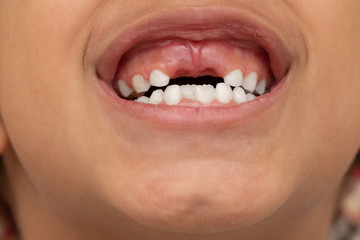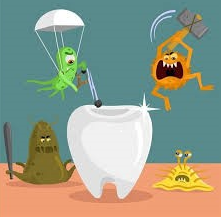If your child needs orthodontic treatments, the sooner you find out, the better. When their teeth are correctly aligned, they are easier to clean and maintain and less likely to develop gum disease, tooth decay, and other periodontal conditions. It’s also essential to determine if your child’s bite is aligned correctly. An adequate bite is also critical for chewing, speech development, and a proper bite, particularly in young children.
While most pediatric dentists recommend children visit an orthodontist by the age of seven when permanent teeth start erupting, some conditions may require a visit by the age of five or six (such as a problem with jaw growth or teeth eruption). Although treatment may not start this early, preventative consultations may help your child’s orthodontist develop a plan for their future dental care.
Until the age of 7 at milk teeth dentition it is rare to see misalignment or bad bite in children. Upper and lower front teeth start erupting by the age of 7. Some natural expansion of the dental arches is expected to provide enough space for these relatively large teeth. Sometimes this expansion does not occur and this results in misalignment and/or bad bite. These types of orthodontic problems can occur for many reasons. It’s relatively common for children to experience jaw and teeth misalignment. You might have noticed these irregularities, or your child’s dentist might have recommended a second opinion from an orthodontist. Regardless of how or when you begin to see a potential problem, an orthodontist can determine if your child requires an interceptive or early orthodontic procedure to correct the bite problem. This is called early orthodontic treatment. The main objective of early orthodontic treatment is to address the bad bite such as underbites,open bites, or deep bites or take control or stop the bad habits such as thumb sucking tongue thrusting, mouth breathing, etc that cause disruption of the chewing, speaking, swallowing functions rather than purely esthetics.
Signs Your Child Might Require Orthodontic Treatment
Orthodontic treatment is not only required to correct the misaligned teeth but also needed to correct the bite, stop the bad habits that may cause a bad bite, and make sure the jaw joints grow normally.
- Trouble biting-chewing or speaking . When a child has difficulty biting or chewing, it may be a sign of misaligned jaws or teeth. Misalignments can range from subtle and hard to notice to complex and pronounced. Open bite or underbite can cause the child to have difficulty chewing and speaking.
- Mouth breathing . Mouth breathing impacts the growth of teeth and can impact the appearance of your child’s face. Due to the mouthbreathing upper jaw may get narrow and a cross bite may occur at the back teeth area . Mouthbreathing may also cause bad breath
- Finger sucking . Oral habits such as thumb-sucking can pull your child’s front teeth forward, crowding the bottom teeth. While most children stop these habits by age four, when they continue into childhood, these habits can cause damage.
- Misplaced, blocked, or crowded teeth . When teeth overlap or are too close together, it can be hard to conduct proper dental hygiene. When left untreated, misplaced or crowded teeth can lead to gum bleeding, bad breath, or cause additional alignment problems.
- Bad bite: Bad bite, also called malocclusion, can include underbites, overbites, and crossbites in the back teeth. When left untreated, malocclusions can cause jaw joint problems and can interfere with speech and chewing.
- Disproportionate teeth or jaw compared to the rest of the face such as dental or facial asymmetry
- Grinding teeth. Teeth grinding, especially at night, can signify misaligned teeth. When left untreated, grinding or clenching can damage your child’s teeth (teeth will be worn down) and further cause jaw joint problems, muscle pain, or headaches.


Early Orthodontic Diagnosis with Dr. Tosun Dental
Early diagnosis for orthodontic concerns can result in preemptive treatment and also allows you to prepare for orthodontic costs down the road. Some orthodontic problems can be corrected faster and more efficiently when they are recognized and treated earlier rather than after all of their adult teeth have come in or after facial development is complete. Early treatment, also called interceptive care, is an orthodontic treatment performed while a child still has some of their baby teeth. During this time, an orthodontist can remove teeth, change jaw positions, or hold specific teeth in place to allow adult teeth to grow properly.
While your pediatric dentist plays an essential role in your child’s dental hygiene, only an orthodontist can correct orthopedic problems. An orthodontist receives additional education and training to practice orthopedic services and procedures. They also complete a residency program where they receive hands-on experience and depth instruction to learn proper, safe tooth movement (orthodontics) and the guidance of dental, jaw, and facial development (dentofacial orthopedics). These specialized services are the sole focus of their practice.
At Dr. Tosun Dental Clinic, we strive to help our patients maintain their dental health and enhance their smiles by creating a safe and comfortable environment for their dental needs. If your child needs orthodontic treatment, we can help. Our orthodontics team leverages the latest cutting-edge technologies to ensure optimal results with minimal discomfort. We take great pride in helping our patients create beautiful smiles.
If you are interested in learning more about oral health or orthodontics, we’d love to help. Contact a member of our team to learn more .












